Sarah Sundin's Blog, page 125
July 27, 2022
Today in World War II History—July 27, 1942
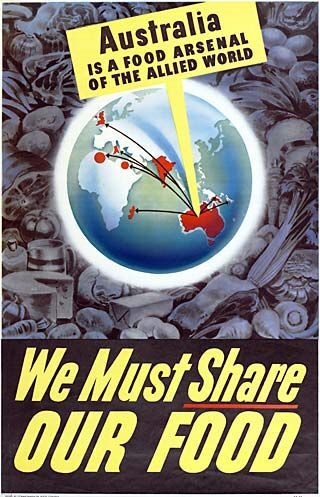
Australian poster, WWII
80 Years Ago—July 27, 1942: British forces press attack at El Alamein, but fail to make gains against Germans.
Australian Women’s Land Army is formed for agricultural workers.
The post Today in World War II History—July 27, 1942 first appeared on Sarah Sundin.July 26, 2022
Today in World War II History—July 26, 1942
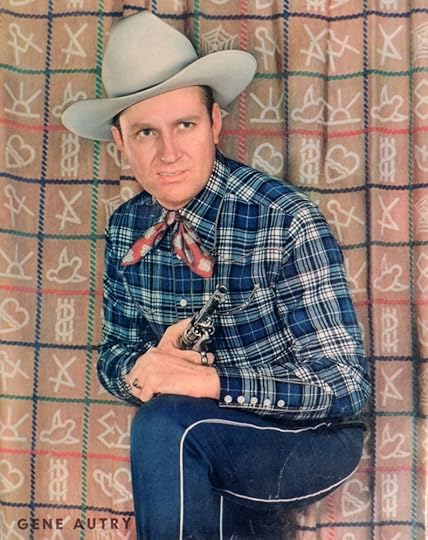
Gene Autry on the cover of the New York Sunday News magazine, 12 February 1942 (public domain via Wikipedia)
80 Years Ago—July 26, 1942: Maj. Gen. Millard Harmon takes command of US Army Forces in South Pacific Area.
In a live radio broadcast, Gene Autry, cowboy singer/actor, is inducted into the US Army Air Force as a technical sergeant.
Britain begins rationing chocolate and sweets—2 ounces per week.
The post Today in World War II History—July 26, 1942 first appeared on Sarah Sundin.July 25, 2022
Today in World War II History—July 25, 1942
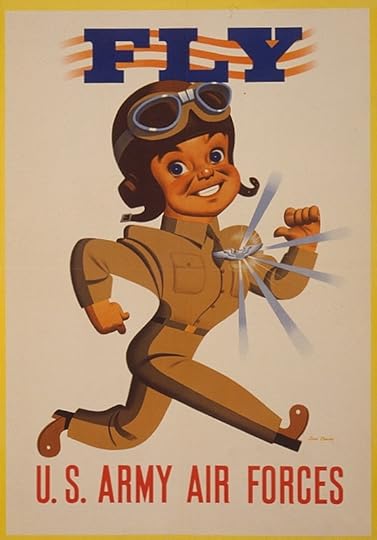
Poster for the US Army Air Forces, WWII
80 Years Ago—July 25, 1942: Allied Combined Chiefs of Staff agree to the invasion of North Africa in November 1942, code-named Operation Torch.
New song in Top Ten: “He Wears a Pair of Silver Wings.”
The post Today in World War II History—July 25, 1942 first appeared on Sarah Sundin.July 24, 2022
Today in World War II History—July 24, 1942
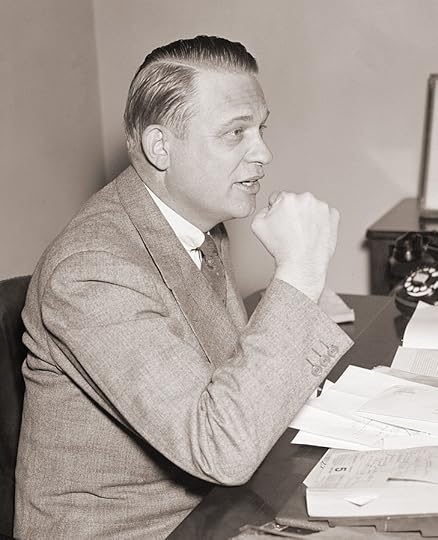
Rep. Martin Dies Jr. (D-TX), chair of the House Committee to Investigate Un-American Activities, 3 April 1937 (Library of Congress: hec.22504)
80 Years Ago—July 24, 1942: German Army Group A takes Rostov, Ukraine.
The Dies Committee (House Committee to Investigate Un-American Activities) indicts 28 people from various American fascist & Nazi groups on charges of sedition—will end in a mistrial in November 1944.
The post Today in World War II History—July 24, 1942 first appeared on Sarah Sundin.July 23, 2022
Today in World War II History—July 23, 1942
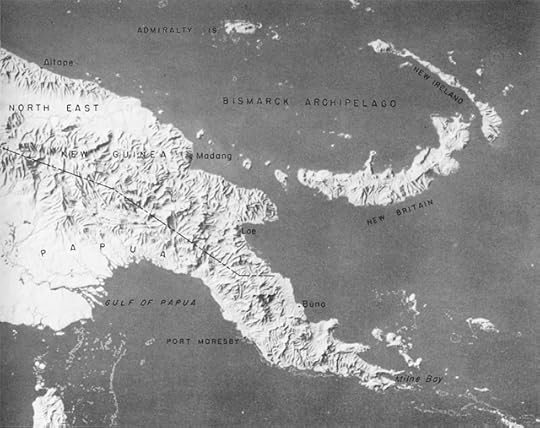
Map of Papua New Guinea (US Army Center of Military History)
80 Years Ago—July 23, 1942: In Switzerland, Salvadoran consul-general Col. Jose Arturo Castellanos and Hungarian Jewish businessman George Mandel-Mantello, Castellanos’s secretary, begin forging thousands of false Salvadoran papers to send to Jews in Europe; 90% of certificate holders will survive the Holocaust.
At Treblinka concentration camp, Nazis begin mass extermination by gassing.
On Kokoda Trail on New Guinea, Japanese take Awala and force Australians back toward Wairopi.
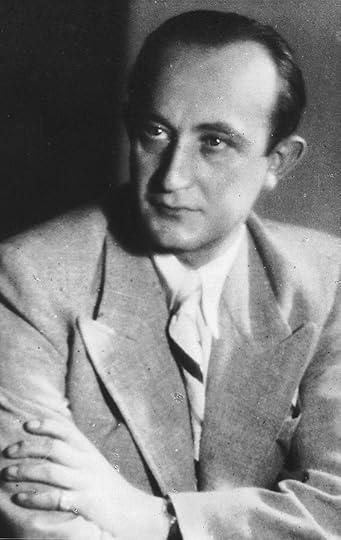
George Mandl-Mantello (US Holocaust Memorial Museum: pa1133502)
The post Today in World War II History—July 23, 1942 first appeared on Sarah Sundin.July 22, 2022
Make It Do – Gasoline Rationing in World War II

Although rationing was an important part of life in America during World War II, the US government was apprehensive about gasoline rationing. As a symbol of freedom of movement, the automobile represented everything American, and politicians feared riots and rebellion if they curtailed that freedom.
Gasoline Shortage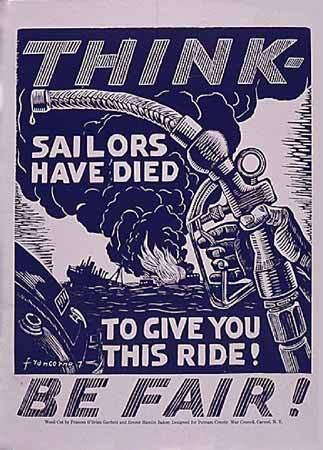
US poster, WWII
In early 1942, German U-boats ravaged Allied shipping off the US East Coast and in the Gulf of Mexico. Oil tankers were their favorite targets. The Allies needed oil for airplanes, ships, tanks, and to run factories, and the Germans hoped to cut off the supply. It didn’t take long for a gasoline shortage to develop on the US East Coast.
On April 9, 1942, gasoline deliveries were decreased to seventeen Eastern states, but to ensure fairness, rationing was required. On May 15, 1942, 8 million motorists in those seventeen states registered for gas ration cards, and rationing began on the East Coast on July 22, 1942.
Rubber Shortage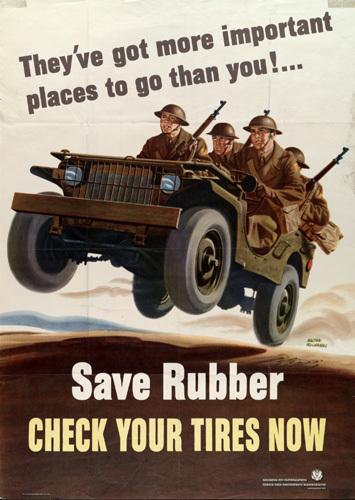
US poster encouraging conservation of rubber, WWII
Another serious issue that eventually led to nationwide gasoline rationing was the rubber shortage. The United States didn’t have enough rubber for military needs, much less civilian needs. While tires and other rubber items were rationed, the simplest way to reduce wear and tear on tires was to restrict driving.
Drive Less
US poster, 1944
On Dec. 1, 1942, a nationwide Victory speed limit of 35 mph was instituted, since higher speeds removed tread more quickly. Lightweight Victory Bicycles were introduced in March 1942, but were rationed to war workers and certain professionals and only when public transportation wasn’t available – and all other bicycle production ceased.
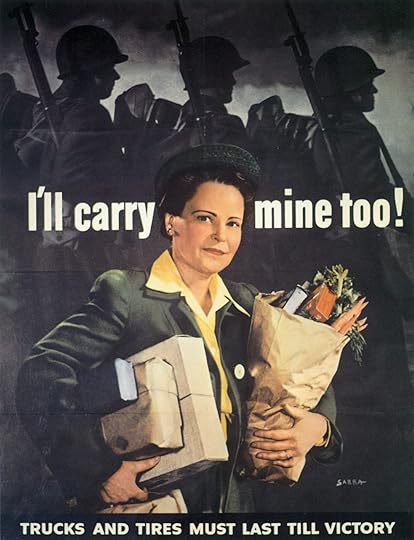
US poster, 1943
People were encouraged to use public transportation and their own two feet. Commuters were told to “Carry more to win the war,” and to share rides or form car clubs. Employers experimented with staggered shifts to reduce traffic – and therefore, gasoline use.
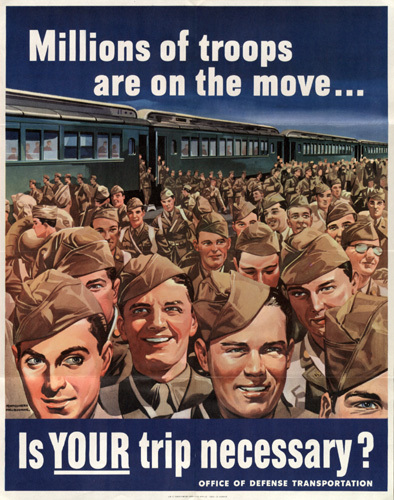
US poster, WWII
Pleasure driving was banned and the “Vacation at Home” was promoted, not just to save gas and rubber, but due to the strain on the nation’s train system by military transport.
Fewer Cars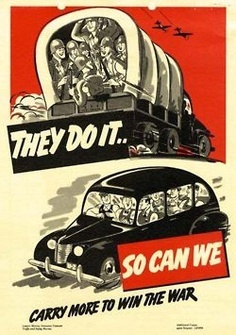
US poster encouraging car clubs, WWII
Car manufacturing stopped on Jan. 1, 1942, and no new automobiles could be purchased after Feb. 22, 1942. A small stock was held in reserve for critical replacements. The auto manufacturers converted their assembly lines to produce jeeps, tanks, and bombers, while the American consumer made do. Car theft became a larger problem than ever. On July 1, 1945, automobile production was allowed again, and the first car rolled off the assembly line on Aug. 30, 1945 – a Hudson Super Six coupe.
See this excellent article on the National WWII Museum blog about cars during the war.
Nationwide Gasoline RationingAlthough the U-boat menace decreased late in 1942, the rubber shortage remained critical. On Nov. 26, 1942, the government announced that nationwide gasoline rationing would go into effect Dec. 1, 1942. The program continued until Aug. 18, 1945.
Stickers and Coupons
Poster explaining US gasoline rationing cards in WWII
The American public learned to deal with an elaborate system. Every motorist was issued a windshield sticker displaying a letter. Some of these categories changed, emerged, or were eliminated during the war:
A: most motorists – 3 gallons/week, reduced to 2 gal/wk March 22, 1944B: for war workers who shared rides with 3 or more passengers – 8 gal/wkC: essential occupational use, such as physicians, clergy, and mail carriersD: motorcyclesE: emergency vehicles such as ambulances, police, fire – unlimitedR: non-highway use, such as farm vehicles – unlimitedT: truckers, instituted January 1, 1944 – unlimitedX: a controversial sticker for VIPs – unlimitedAt the gas station, the attendant checked the windshield sticker and took the required number of ration book coupons – also marked with the appropriate letter. Of course, payment was also required – about 19 cents/gallon.
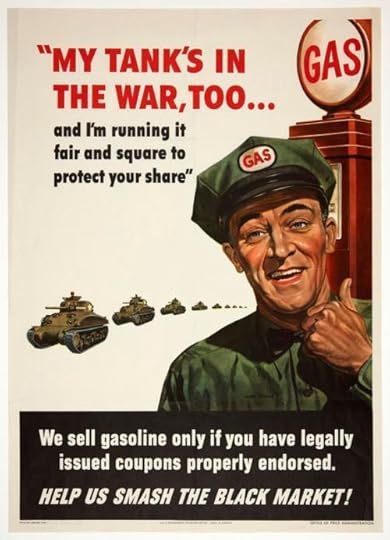
US poster, WWII (Franklin D. Roosevelt Presidential Library & Museum: MO 2005.13.44.14)
Gas ShortageDespite rationing, a serious gas shortage developed early in 1944. The high military use and restricted shipping contributed to this problem. In January 1944 on the West Coast, very little gasoline was available – and none at all in Sacramento, California, not even for emergency vehicles. On March 22, 1944, “A” class drivers were further restricted to 2 gallons/week.
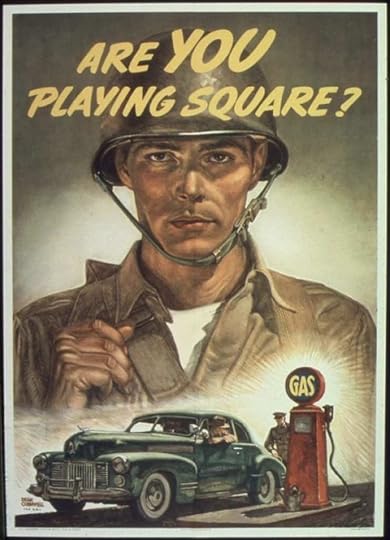
US poster, WWII
Not everyone complied. The black market became quite profitable, cases of gas siphoning made the front page of small-town newspapers, and several ration book forgery rings were broken up.
How do you think modern-day Americans would deal with these restrictions?
The post Make It Do – Gasoline Rationing in World War II first appeared on Sarah Sundin.Today in World War II History—July 22, 1942

US poster, 1944
80 Years Ago—July 22, 1942: In US, gasoline rationing coupons are issued in 17 Eastern states and rationing begins (Read more: “Make It Do – Gasoline Rationing in World War II”).
Nazis start sending Warsaw’s Jews to death camps, especially Treblinka.
Japanese take Buna and Giruwa, New Guinea, beginning battle for Kokoda Trail.
The post Today in World War II History—July 22, 1942 first appeared on Sarah Sundin.July 21, 2022
Today in World War II History—July 21, 1942
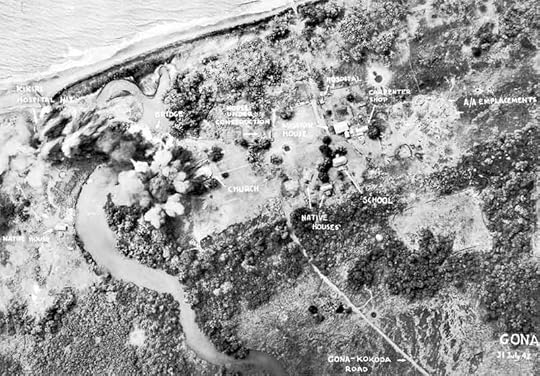
Aerial reconnaissance photo of Buna-Gona area after Japanese landings, 31 July 1942 (Australian War Memorial: 128399)
80 Years Ago—July 21, 1942: Japanese invade Papua New Guinea at Buna and Gona, and push south toward Port Moresby.
The post Today in World War II History—July 21, 1942 first appeared on Sarah Sundin.July 20, 2022
Today in World War II History—July 20, 1942
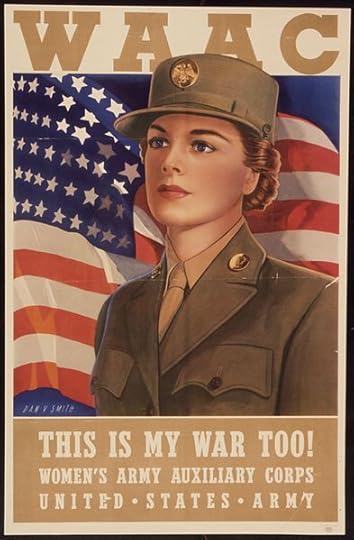
US poster for the Women’s Army Auxiliary Corps, WWII
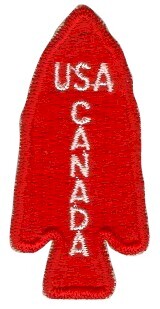
Shoulder patch of the First Special Service Force during WWII
80 Years Ago—July 20, 1942: First Special Service Force (FSSF) is established under Col. Robert Frederick as a commando unit with both US & Canadian troops.
The first US Women’s Army Auxiliary Corps (WAAC) Officer Candidate School opens at Fort Des Moines, IA.
The post Today in World War II History—July 20, 1942 first appeared on Sarah Sundin.July 19, 2022
Today in World War II History—July 19, 1942
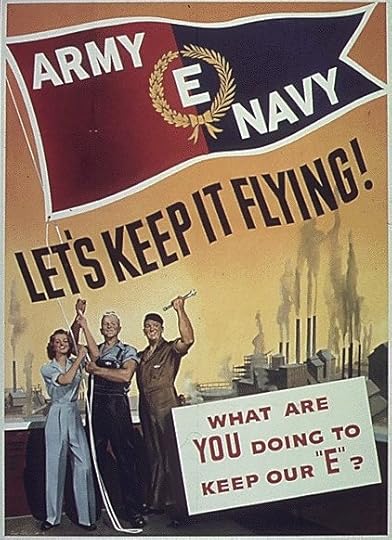
Poster encouraging workers to strive for Army-Navy “E” Award for meeting production quotas, WWII
80 Years Ago—July 19, 1942: German Adm. Karl Dönitz withdraws U-boats from US East Coast to the Caribbean due to American convoy system and increasing U-boat losses.
Army-Navy “E” Award is created for to reward war plants that meet quotas.
George Washington Carver of the Tuskegee Institute begins work with Ford Motor Company in Dearborn, MI, to derive artificial rubber from plant sources.
The post Today in World War II History—July 19, 1942 first appeared on Sarah Sundin.


